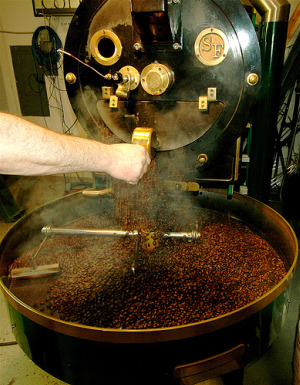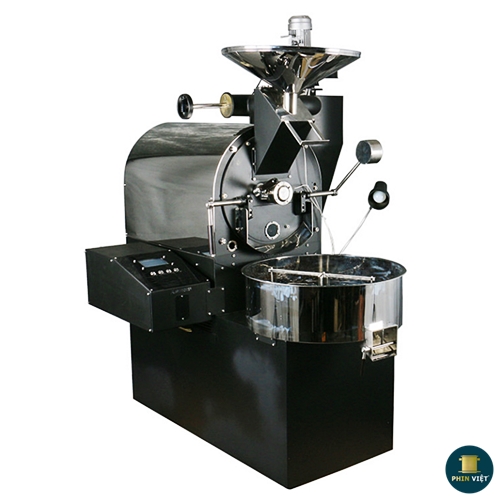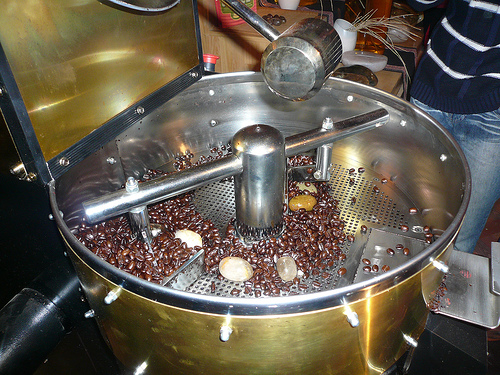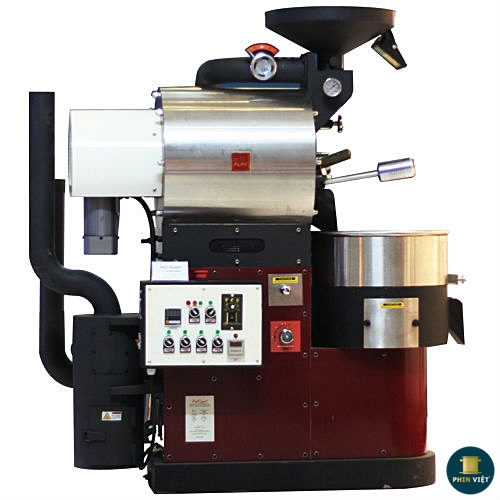Coffee Rangers
Ripe coffee will give a smooth, smelly wood flavor; European style is very fragrant and black Italian style with dense flavor in the mouth forever.
Coffee roasters have a huge task. When properly roasted, the fine seeds will become magical coffee; otherwise, they are just thrown away. That's why leading companies are always ahead of the curve.

In stores, where coffee is roasted in the traditional way, roasters are impressive creatures like ancient steam engines, with tubes, levers and heat regulators. Roasting takes about 12 to 20 minutes, depending on the type of machine and grain to be roasted, temperatures between 180 and 250 ° C. The beans are light brown when they are heated, so we change their color from light blue to brown. They are also resized and dehydrated. As far as the end of the process, essential oils begin to emanate.

Although roasting machines are equipped with air ducts to let roasters know the level of roasting or stopping roasting as needed and checking for sample extraction, rangers work primarily with the ears. Roasted seeds begin to "sing": they sing and roll. Upon hearing this sound, the roaster experienced that it was time to shutdown. Then, they opened a slide and hot coffee beans poured into a large bucket with instant cooling ventilation.
The art of roasting hands is extremely delicate, reflecting the taste and personal taste. Some roasters warn that roasting should not be too thorough because it will deodorize. There are many different opinions when it comes to the right temperature for the best coffee in the world.
For example, there are two schools of thought about Kenya beans. Some believe that they should be roasted to reduce the acidity naturally, to become more sweet; Conversely, others have suggested that roasting will enhance the flavor and bring about the innate properties of coffee. The school of "roasting" seeks harmony and consistency, the school "pristine" is a sense of innate qualities, even the risk of shock to those who are not used to coffee.
Bruno Saguez, one of the great rowers in Paris, noted that connoisseurs are increasingly appreciating strange flavors, unlike the ones they are used to. At his shop near the Pompidou Center, a rich collection of the finest coffee in the world can be sampled, Saguez roasts coffee every morning under the watch of the customer. This is a subtle, highly focused and inspiring art. Saguez is one of the rare roasters in France that offers a variety of roasted, roasted, golden, almost black. And he is the only one who gives a common ground to various roasts - great flair. For example, he gave some Mexican Maragogype to light coffee to increase its acidity and the faint kind of French (rather pale brown) would be darker and more aromatic.

In Piansa, Florence (Italy) (as shown above), as elsewhere, when the lid of the roasting machine opens and the hot coffee beans dance, the room is immediately filled with the magic of coffee. Fresh roasting, like the aroma that warms the kitchen, where coffee is roasted in a kitchen pan, is similarly produced by domestic coal furnaces - roasters are still on sale. In Belgium, where an average of three cups of coffee a day is consumed, Etienne Knopes, whose father and grandfather were also former roasters, boasts a large number of middle-class customers. stylish and stylish.
The range from light to very dark is full of subtle shades that include all the colors of the main terms: mild, medium, french French (the most popular roast in France today), Europe (dark brown ), French (very bold, but ironically, increasingly rare in France) and Italy (almost black). Fruity will create scent and rich organic ingredients. This has long been prevalent in Germany, Scandinavia and eastern France. The roasted seeds are also used in Turkey and Greece to make "Turkish coffee". On the other hand, roasting longer (ie more thoroughly) produces black, dark, sweet and sometimes bitter flavors than "traditional" coffee. The very fine mash (in order to make foam for espresso) is the rule in Italy, in the north and south of France and - even more dense and more oily - in Lebanon and some Middle Eastern countries. , where the taste for Turkish coffee is very bold. The difference between roasted and well roasted coffee is huge, like between cooked and raw food or black tea and green tea.
By accident, it would be interesting to know that recently in Italy and the United States, roasters have been promoting the quality of their roasted coffee. No one can deny that this - with their organic and natural - is very seductive. But since coffee beans have become coffee, that is, for at least four or five centuries, these beans are roasted, which is always done by using metal devices to burn. hot because no better items were discovered. Fuel for heating - wood, gas, or electricity - is not effective with the quality of roasting.

Moreover, there is no reason why you should not try roasting coffee in your own kitchen. You will need a heavy, old wooden pan to disassemble the coffee beans (color must be uniform), a heating source (any kind of kitchen) and - if you are a beginner - some cheap coffee will not make you sorry if you miss the chance. Exercise will bring perfection and it will take a long time to learn how to roast: the coffee will break when squeezed by hand, but not burn. The best roast is to start roasting with small fire and end with a big flame. When the beans start to sizzle, they need to be poured into a cool place immediately. The other way is to use a small electric roasting machine that is now available in many markets. However, homemade coffee is never as good as it is made by professionals who have the skills and experience to roast good coffee properly.
Also, know that roasted coffee has to be left in place for 36 hours before grinding, so the only strengths are lost from the roasted seeds at home that they may have: absolute purity.
The new roasted coffee will be immediately poured into a tray, stirred for air to stop the next roasted. Then the roasters will evaluate the aroma, color, firmness and initial assessment of the quality of roasted seeds ... However, the final evaluation is only made after 36 hours because the beans The chocolate must be left before being blended and enjoyed.
Author: Ngo Minh (General)





.jpg&w=170&h=90&zc=2)





